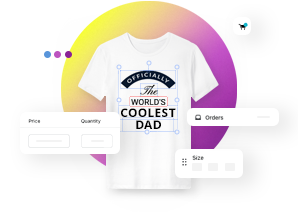On this page
- Establishing clear communication with customers
- [Defining the customization process](#customization process)
- Presenting a final product proposal
- Communicating production timelines and delivery expectations
- Offering customer support for customization inquiries and issues
Managing customer expectations and communication when selling customized products

Customizing products to meet the unique needs of customers is an invaluable tool for many businesses. It allows them to offer products and services that are tailored to their individual customers, creating a more satisfying shopping experience. However, managing customer expectations and communication when selling customized products can be challenging. In this blog post, we’ll discuss strategies for effectively communicating with customers about customization options, setting realistic delivery timelines and expectations, providing customer support for customization inquiries and issues, and building trust through ongoing communication. Through these strategies, you can ensure customer satisfaction while still delivering customized products that meet their needs.
Establishing clear communication with customers
Establishing clear communication with customers is essential when selling customized products. It’s important to ensure that customers understand the customization process, as well as the delivery timeline and expectations. This will help set realistic expectations and create a better customer experience throughout the process.
The first step in establishing clear communication with customers is forming a rapport with them. This means having open conversations about their needs, understanding what they're looking for, and providing advice on how to best customize their product. It's also important to respond quickly to any inquiries customers may have about the customization process. Doing so will show that you value their time and that you are invested in helping them get the most out of their purchase.
When responding to customer complaints or feedback, it’s important to remain professional at all times. Acknowledge any issues raised by customers, provide an explanation of why things happened the way they did if necessary, and offer solutions for how these issues can be rectified in the future. Doing so will demonstrate your commitment to customer satisfaction and help build trust between seller and customer over time.
Finally, it’s important to keep lines of communication open throughout the customization process — from initial inquiry through delivery — in order to maintain a successful relationship with each customer. Regularly checking in on progress updates or delivering surprise bonuses like discounts or free shipping can go a long way toward ensuring customer satisfaction while building trust between seller and customer over time.
Defining the customization process - Setting clear guidelines and limitations for customization.
When it comes to customizing products for customers, setting clear guidelines and limitations from the outset is essential. In many cases, customers may not be aware of all the options available to them or the full scope of what customization can offer. It's up to the seller to explain these details so that customers can make an informed decision about their purchase.
The first step in defining the customization process is to explain the difference between standard and customized products. Standard products are those which have already been produced and are available for sale as-is. Customized products, on the other hand, require special consideration and design work before they can be ready for purchase. Customers should be made aware of this distinction before they commit to buying a customized product, as it will impact their expectations of timelines and delivery dates.
The next step is to outline any customization options available for different types of products. Depending on the product being customized, there may be a range of different choices when it comes to colors, sizes, features, materials or styles. Explaining each option in detail can help customers make informed decisions about which features they'd like included in their customized product. Additionally, sellers should also provide information on any additional costs associated with certain customization requests (such as shipping fees).
Finally, sellers should outline any limitations that exist when it comes to customizing certain types of products. For instance, if a customer wants to customize a pair of shoes but there are only limited sizes or colors available at that time – this should be clearly communicated so that expectations remain realistic throughout the process. Moreover, offering solutions for how any issues can be rectified in future orders will ensure customer satisfaction even if a desired outcome cannot be achieved during this particular order cycle.
By setting clear guidelines and limitations from the outset when selling customized products – such as explaining differences between standard and customized product options; outlining available customization choices; providing information on additional costs; and communicating any limitations – sellers can ensure customer satisfaction while also building trust with customers throughout the entire purchasing process
Presenting a final product proposal
When looking to present a final product proposal, it is necessary to provide customers with an accurate visual representation of the proposed item. This can be done in either 2D or 3D and will allow potential buyers to understand exactly what they are purchasing. Furthermore, all associated costs should be outlined in detail – such as shipping fees, taxes, labor expenses for customization work, and any other production-related costs – so that customers can make an informed decision about their purchase. Additionally, warranties and guarantees should also be communicated clearly so that customers know their rights if something goes wrong after delivery. Finally, it's important for sellers to keep lines of communication open throughout the customization process in order to build trust with their clients and promote lasting relationships.
Communicating production timelines and delivery expectations
The process of selling customized products requires clear and accurate communication about production timelines and delivery expectations. Establishing tracking information to update customers on the progress of their order, providing up-front knowledge of any additional costs associated with customization requests, and responding quickly to all customer inquiries and complaints are all necessary steps that should be taken in order to provide a positive experience for both the seller and buyer. By following these steps, you can ensure satisfaction from start to finish.
Offering customer support for customization inquiries and issues
When selling customized products, offering customer support is essential for ensuring customer satisfaction and building trust. Customers should be able to ask questions about the customization process and have their inquiries answered in a timely manner. The following are strategies for providing customer support when selling customized products:
- Keep a detailed record of all customer inquiries and requests. This helps to ensure that customers receive consistent responses to their questions and that any issues they bring up are addressed promptly. Additionally, having a record of all customer interactions allows businesses to track customer satisfaction over time.
- Create a list of frequently asked questions (FAQs) and their answers. Having an FAQ page on your website or a document with commonly asked questions and their answers can help customers quickly find the information they need without needing to contact you directly. This reduces wait times for customers who may be looking for basic information about the customization process or product specifications.
- Provide a dedicated customer service contact or department. Designating one team member or department responsible for handling customer inquiries is essential when offering customizations as each request needs individual attention in order to be properly addressed. Providing customers with direct access to this person or team also enables them to provide feedback more easily, allowing businesses to stay on top of any issues that may arise during the customization process and correct them quickly if necessary.
- Develop a system for tracking requests and feedback from customers. A tracking system provides visibility into how long it takes for requests to be fulfilled, which helps businesses identify potential delays in production timelines or delivery expectations before they become an issue with customers. It also allows businesses to review feedback from past projects so they can better anticipate problems in future ones.
- Respond quickly and professionally to inquiries. Customers should not have difficulty getting quick responses when requesting additional information about customizations, modifications, changes in delivery dates, etc. Setting expectations upfront regarding response times will help maintain good relationships with customers by letting them know exactly how soon they will get an answer back from you. Being professional at all times (even if responding negatively) will also help build trust between seller and buyer.
These strategies help ensure customer satisfaction, build trust between seller and buyer, and foster ongoing communication throughout the entire customization process. With clear communication, accurate records, reliable tracking systems, and timely responses, businesses can make sure their clients remain happy every step of the way. Managing ongoing communication and feedback
Managing customer communication and feedback is an important part of selling customized products. To ensure high levels of customer satisfaction, sellers should create a feedback loop with customers, document customer feedback securely, follow up after deliveries, offer an easy way for customers to contact customer service, and use a professional tone when communicating.
Creating a feedback system allows sellers to understand their customers’ needs and preferences while also providing valuable insights into what they want from their purchases. Following up after deliveries can help gain data on how customers responded to the product or service as well as giving them the chance to improve in the future. Additionally, having an accessible way for customers to contact customer service with customization inquiries or issues helps build trust between buyer and seller. Finally, using a respectful tone throughout all steps of the process fosters lasting relationships between them going forward.

